37 Hours in Fez, Morocco
37 Hours in Fez, Morocco
Link to Original Article on Werewolf.co.nz
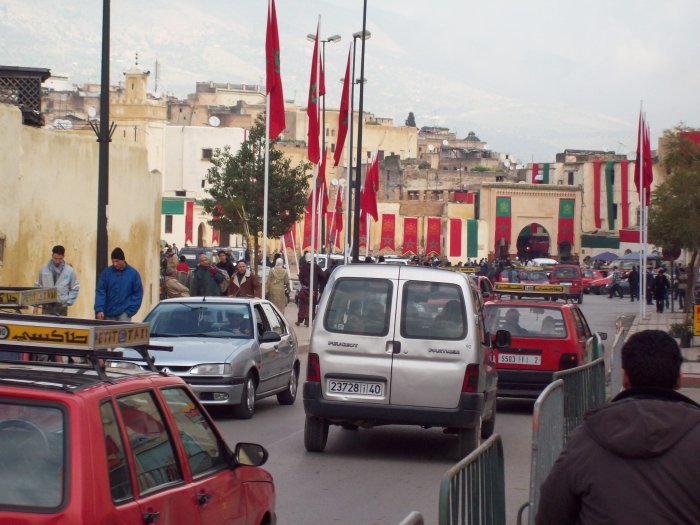
3.30 a.m. - Fez railway station, eight hours later than planned, by train from Tangier. The ferry from Alegiciras put us in Morocco too late to catch the 5.18 express to Fez, which left bang on time with its nice, cheap first-class carriages. We had to take the 8.54 p.m.instead, changing at Sidi Kacem around one a.m. Mint tea, no beer and wonderful spicy shawarmas at Tangier railway station. The perfect antidote to days of bland Spanish food.
3.40 a.m. - Mohamed has met us off the train and he's leading the five of us in two taxis towards the medieval walled Medina of Fez. There is almost no one on the streets in the New City - the occasional dog trots by. A policeman in sharp leather coat and peaked cap peers officiously as our convoy whisks past, heading for the R'cif Gate - the entrance at the bottom of the Medina, where perhaps 500,000 of the Fez's 3 million live.
From the R'cif, we must walk. The Medina is the world's largest urban settlement without cars. Our wheeled suitcases clatter on the cobblestones. The smell of donkey shit is inescapable. The streets are maybe two people wide, covered, and high. Yellow light intermittently shows a way.
Max, who is 13, looks worried. He's asked if we'll be robbed on this trip. I reckon this strikes him as robber territory.
"You do not have to fear," says an English-speaking hanger-on, as the policeman cuts in and interrogates Mohamed.
3.45 a.m. - Now under debatable police escort, we move on deeper into the Medina, up past a "Beaux Tapis" (beautiful carpets) sign, through a little square, into what seems like a tunnel, and buzz at a nondescript, high door.
It clicks open and we
enter Dar Seffarine (www.darseffarine.com), a 600 year-old
merchant's house restored by Aladdin, an Iraqi architect,
and his Norwegian wife, Kate.
We pass through a small,
wooden door, cut into another that is perhaps 3 meters
high.
3.50 a.m. - Despite the dark, we can make out
the high vaulted two- storey atrium, which daylight will
reveal is beautifully decorated in the Andalusian Islamic
style - wood and plaster-work, marble and mosaic tiling.
The kids disappear through a 10 metre high door into their
shared room, with what must be a 15 metre stud.
Ruth and
I are shown to our second floor bedchamber, itself large,
with a beautiful bed and linen, bathroom and slightly
uncomfortable, high quality Moroccan furniture.
4 a.m. - I have never felt more excited to arrive anywhere. My head hits the pillow so late but I can't wait to get up.
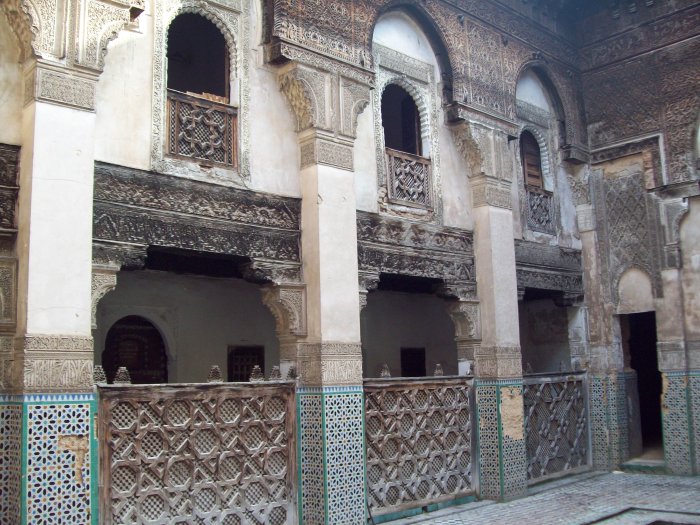
Saturday, 8.15 a.m. - Dar Seffarine is like the mansion in Cluedo - there are all these staircases and not everywhere leads to everywhere else. To get to the third floor dining room from my second floor bedroom, I have to go down two flights and up three, choosing the right one from three identical ground floor staircase entries. Throughout our stay, I am constantly uncertain about all of this.
From the rooftop of Dar Seffarine, the whole hill of old Fez is laid out before you. It stretches up like a Wellington suburb, except that it's more than 1000 years old, built of concrete and earth, wood and iron, its skyline festooned with rooftop satellite dishes. This is the most striking change since I was last here, 20 years ago. In so many other ways, Fez seems frozen in time. Apparently, the King of Morocco thinks no one needs help in the Medina : just look how many satellite dishes they have.
8.30 a.m. - In the rooftop dining room. Mohamed - the one who my daughters will fall in love with, and who cooks, organises and teases us - points to huge red flags draping walls and on standards at R'cif Gate, visible from the balcony. The King is due in Fez, maybe this afternoon.
Hungry, I dig into four different types of flat, sour and dough breads, fresh fruit, and an omelet that Mohamed whips up while I'm downing the first strong coffee of the day.
9.15 a.m. - Seffarine Square. Weak winter sun is captured in the corner of the square occupied by La Cremerie Place. The espresso is strong, the orange juice freshly squeezed on the spot, the halves tossed to a bin by the owner's daughter with a flick that is both deft and deeply specific to this one shop, this one task, the position of that one bin.
About half the men in the Medina don't have jobs, so I sit among a group who cheerfully clear a seat, and take in the morning. A donkey belayed with ropes that have rubbed its hind-quarters hairless carries televisions loaded three-high. A few streets away I will find The Streets of the Televisions and Cellphones, crammed with men selling, buying and loafing in the vicinity of an amazing array of new Nokias and Ericcsons. It's a happening Medina scene, man.
A guy comes along with a shoeshine box. I've been meaning to spruce these shoes up for months. He raises from the scuffed and dusty leather a rich, brown glow. My self-appointed local helper clucks disapprovingly at a profligate 20 dirhams (about $4) for the job.
There is a vigorous local trade in single cigarettes.
1030 - Idriss is our guide in the Medina. Recommended and organised by our hosts, he is an Islamic scholar, English and French-speaker and go-between in the difficult business of buying leathergoods and carpets.
He leads us to one of the many madrassas (Islamic schools) in Fez, the rooms still occupied by international students who come to Fez to study the Q'uran in one the Muslim world's oldest seats of learning. From our rooftop, we are a stone's throw from the Kerraouine University, once renowned for its mathematics as well as its religious studies. Down a lane and into a food market, there is a hideously fresh camel's head hanging by a very comprehensively eviscerated goat.
A wedding district, a spices district, a shops-selling-only-reels-of- artfully-displayed-cotton district. We buy dates in a cone of newspaper and the stall-owner has a serving suggestion: a pecan stuffed where the date-stone was. It is an almost perfect confectionery.
There is no sign of the King.
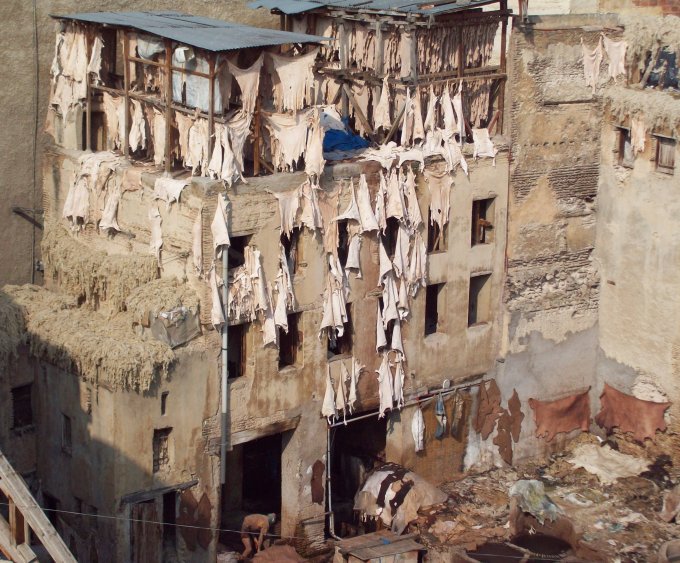
12:30 - The Tannery. The reality of Fez gets challenging. Below us, working in a complex of deep dye-pots, hundreds of years old, legions of men are spending their working lives stamping on animal skins in a thick, cold treacle of chicken poo. When they are dyeing bright colours, their limbs are dyed too.
Listed by UNESCO as a World Heritage site since 1976, the Fez Medina is an exercise in preserving elements of a culture that would almost certainly have fallen to the bulldozer by now, if left alone. Fez maintains not only a unique, medieval city-scape - in which medieval poverty abounds - but also preserves the traditions of artisanal families and communities. Once, there was only one career choice for the son of a leather tanner. Today, the prospect of being up to your thighs in chicken crap and red dye is less appealing than, say, working in a shop or on a construction gang in the New City. The animal skins: hanging in rows along brick walls pocked with anciently grimy windows, the dye vats and two huge wooden waterwheels turning below. Will this scene below us still exist in another 20 years? Should it?
13:00 - Suitably guilt-ridden by seeing the tannery, we are led off a roof and back into the leather shop, where a very determined man says that "unlike in other countries, in Morocco, there is no pressure to buy".
There is, however, no escaping the
obligation to finger every single type of leather from the
soft, supple dromedary to the cheap, easily-creased cowhide
as applied in a multiplicity of coats, bags, and
knick-knackery. We settle on a red goat leather pouffe,
precipitating intense negotiations punctuated by wheedling
("no madam, this is not possible"), flattery ("meet the
managing director of the co-operative, he can make you a
shocking price"), and in the end by simple haste, when the
deal was done.
14:00 - Emboldened, we buy a
carpet at a nearby gallery in an old house of such grandeur
that Dar Seffarine seems suddenly ordinary. The proprietor
insists that Dave Dobbyn bought a carpet there once while
filming a travel show. An awkward moment when a minion tips
mint tea all over me. The look on his face is pure "Don't
beat me, Master".
1600 - For the fourth or so time
today, the muezzins in the mosques call the faithful to
prayer. In Fez, the call sounds like a curious cross
between a World War II air raid siren and a badly recorded
cello practice. I remember real artistry in Cairo. Large
numbers of devout Muslims attend the many mosques, which
politely ask in hand-written notes that state: "Mussilman
People Only May Enter, Thank You for Your
Comprehension".
That said, as the father of two teenage
daughters, I see how men look at them and the way they
accord respect only because I am present. When Ruth and the
girls go out next day on their own, the pestering - for
money and guiding services as much as offers of marriage and
other less life-long liaisons - forces them back to the
Dar.
"Ah, les Gazelles," they say, as the girls walk by.
"Et Monsieur le Chef !" they cry as I emerge from behind the
donkey carrying a big pile of sacks.
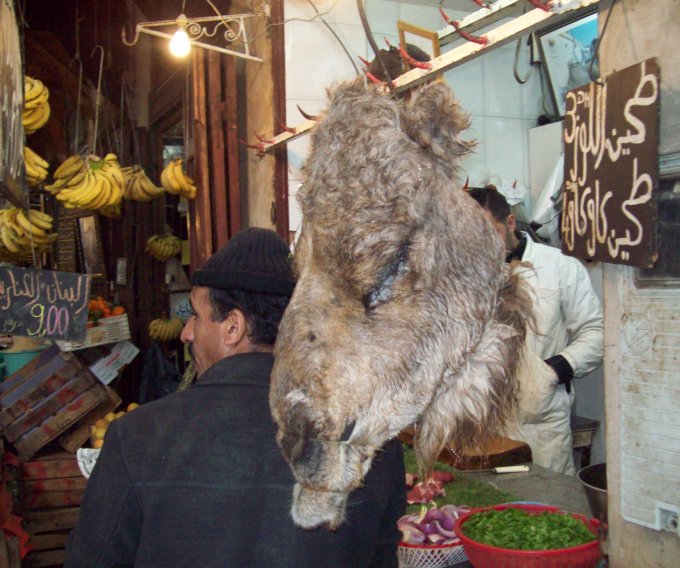
1830 - We are looking for the Caf‚ Clock, recommended in the infernal guidebook, whose maps are all but useless in a city as confusing as this. A plump boy in corduroys with a single upper tooth has been hanging around. He claims to know where the caf‚ is and will guide us there.
20 minutes later - He clearly has no idea, and guiding duties have been handed off to a slightly dodgier looking young guy. I ask a policeman how to get to the caf‚, and tense moments ensue as it seems the Plod frowns on unofficial youth guides. Dodgy Guide, however, comes up trumps and we eat in the sort of expat oasis that anyone who lives in Titirangi for lifestyle reasons should enjoy.
The late middle-aged Australian who seems to date the owner is keen to discuss how things are on Waiheke Island, where he often stays, and reveals that before Fez he was looking at a fish and chip shop in Greytown. Up seven flights of stairs, there's a toilet and a big sign banning hashish from the rooftop. As a non-Muslim eatery, just putting out a few empty beer bottles will attract unwelcome police attention.
2000 - Since Caf‚ Clock is at the top of the Medina hill, we walk back to Dar Seffarine, following our noses and always heading downhill. We get lost a few times, and there are quite a few "gazelle" moments. But when we ask for directions, people escort us willingly and there is no question of payment. "You are not in America now - you must trust the Moroccan people", said a guy whom we tried to ignore, but was actually being helpful.
2100 - Back at the Dar, the four or five other guests are finishing the lamb tagine, couscous and salad served for dinner, followed by an applecake.
Kate and Ala' sit up with Graham - a North Yorkshireman who recently bought his own Dar nearby and who works as another fixer at Seffarine - and a few guests, yakking into the evening about Islam, Gaza, television and the possibility of the King coming tomorrow, since he didn't come today.
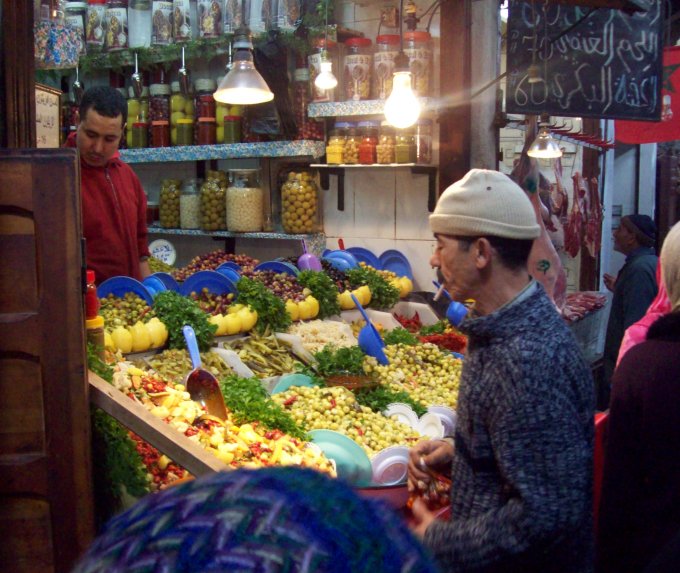
Sunday, 0830 - The sun is up, and there has been an overnight flurry of tree-pruning on the King's most likely route to the Medina. Perhaps he will come today.
Mohamed contacts Mohamed and we arrange to visit the Roman ruins of Volubilis two hours outside Fez - a most casually curated site with many large mosaics, next door to the sacred and picturesque hill town of Moudray Idress, burial place of the founder of Fez.
1030 - As we seek to leave the Medina by the R'cif Gate, members of the royal police guard are blocking the entrance. An elaborate, fringed marquee is being erected, and carpet rugs are being piled on the ground where the official party will assemble.
1100 - As we drive out of Fez to Volubilis, the sky is darkening. Winds are whipping up the wide streets outside the Medina, blowing down the big red flags that have been anchored in ways that any Kiwi could tell you wouldn't survive a decent gust. Later in the day, there will be rain and then sleet.
When we return, the other Mohamed will tell us that the King came today, a brief visit before retreating from the weather.
In the lane outside, I haggle half-heartedly over a pair of woollen leggings before retreating to my own sheltered castle.
- Pattrick Smellie went to Fez under his
own steam. All the images in this article are also by
Pattrick
Smellie.
ENDS


 Gordon Campbell: On Iran Killing Its Rappers, And Searching For The Invisible Dr. Reti
Gordon Campbell: On Iran Killing Its Rappers, And Searching For The Invisible Dr. Reti Peter Dunne: MPs Unusually Quiet On Pay Rise
Peter Dunne: MPs Unusually Quiet On Pay Rise Ian Powell: Cuba And New Zealand: A Relationship Worthy Of Strengthening
Ian Powell: Cuba And New Zealand: A Relationship Worthy Of Strengthening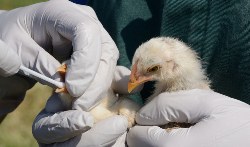 Gordon Campbell: On bird flu, AUKUS entry fees and Cindy Lee
Gordon Campbell: On bird flu, AUKUS entry fees and Cindy Lee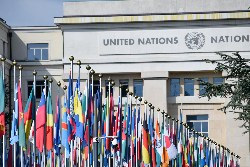 Binoy Kampmark: Israel’s Anti-UNRWA Campaign Falls Flat
Binoy Kampmark: Israel’s Anti-UNRWA Campaign Falls Flat Peter Dunne: Luxon Gets Out His Butcher's Knife - Briefly
Peter Dunne: Luxon Gets Out His Butcher's Knife - Briefly